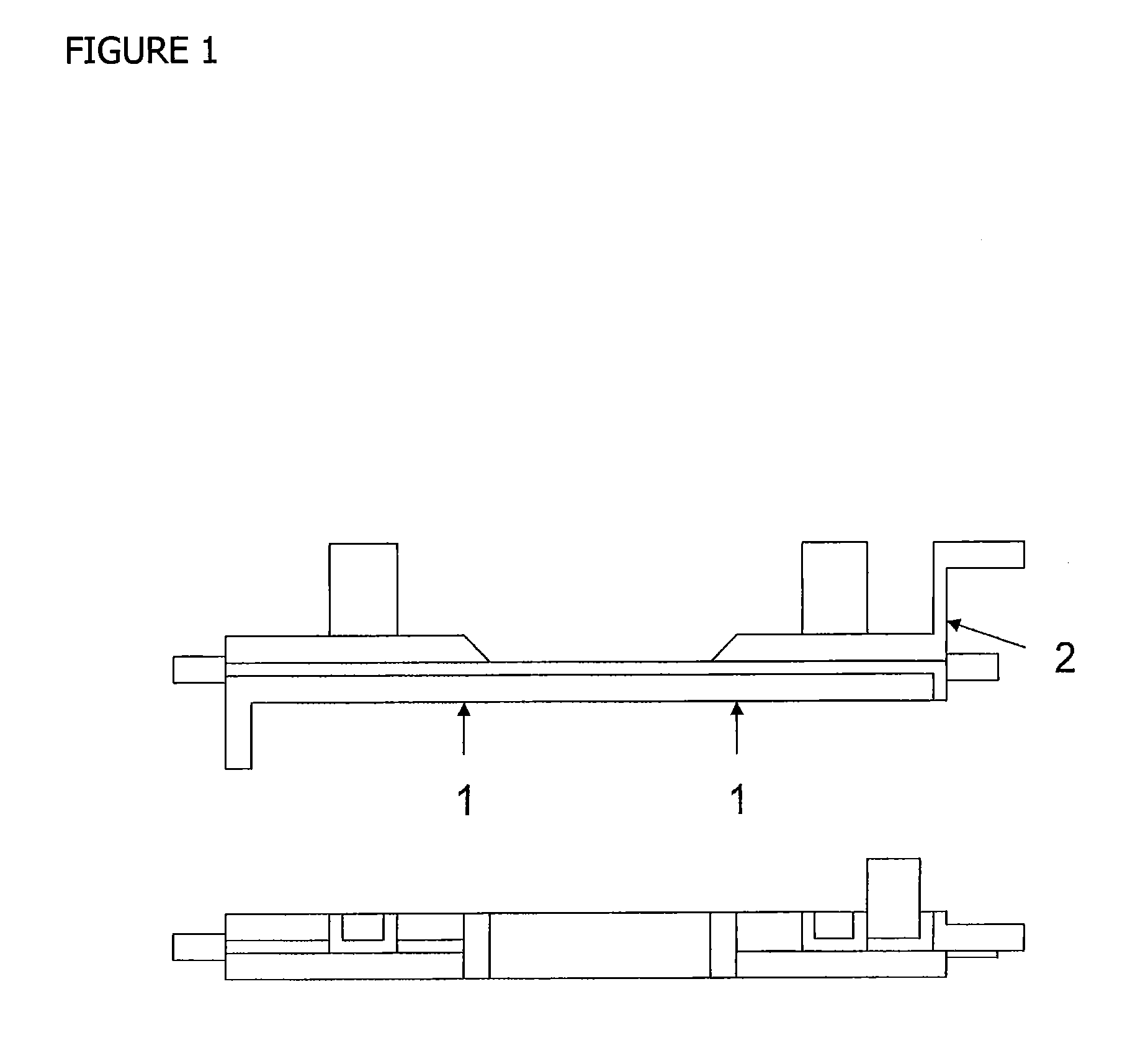Process for producing metallic or ceramic shaped bodies
a technology of ceramic and metal forming, which is applied in the field of process for producing metallic or ceramic forming bodies, can solve the problems of unavoidable plastic deformation of powder molding, high labor intensity, and high labor intensity of workers, and achieves the effect of reducing labor intensity and time-consuming and labor-intensiv
- Summary
- Abstract
- Description
- Claims
- Application Information
AI Technical Summary
Benefits of technology
Problems solved by technology
Method used
Image
Examples
example 1
[0083]Molding composition 1 had the following composition:
56.75%byvolumeofamixtureof98%byweightofironcarbonylpowderand2%byweightofnickelcarbonylpowder43.25%byvolumeofbindercomprising+90%byweightofpolyoxymethylenewith2mol%of 1,3-dioxepane+10%byweightofpolyethyleneoxidewithamolarmassof2000,endgroup-cappedbymethylation
example 2
[0084]Molding composition 2 had the following composition:
56.75%byvolumeofamixtureof98%byweightofironcarbonylpowderand2%byweightofnickelcarbonylpowder43.25%byvolumeofbindercomprising+80%byweightofpolyoxymethylenewith2mol%of 1,3-dioxepane+20%byweightofpolyethyleneoxidewithamolarmassof2000,endgroup-cappedbymethylation
example 3
[0085]Molding composition 3 had the following composition:
56.75%byvolumeofamixtureof98%byweightofironcarbonylpowderand2%byweightofnickelcarbonylpowder43.25%byvolumeofbindercomprising+50%byweightofpolyoxymethylenewith2mol%of 1,3-dioxepane+50%byweightofpolyethyleneoxidewithamolarmassof2000,endgroup-cappedbymethylation
PUM
| Property | Measurement | Unit |
|---|---|---|
| Percent by volume | aaaaa | aaaaa |
| Percent by volume | aaaaa | aaaaa |
| Percent by volume | aaaaa | aaaaa |
Abstract
Description
Claims
Application Information
 Login to View More
Login to View More - R&D
- Intellectual Property
- Life Sciences
- Materials
- Tech Scout
- Unparalleled Data Quality
- Higher Quality Content
- 60% Fewer Hallucinations
Browse by: Latest US Patents, China's latest patents, Technical Efficacy Thesaurus, Application Domain, Technology Topic, Popular Technical Reports.
© 2025 PatSnap. All rights reserved.Legal|Privacy policy|Modern Slavery Act Transparency Statement|Sitemap|About US| Contact US: help@patsnap.com



